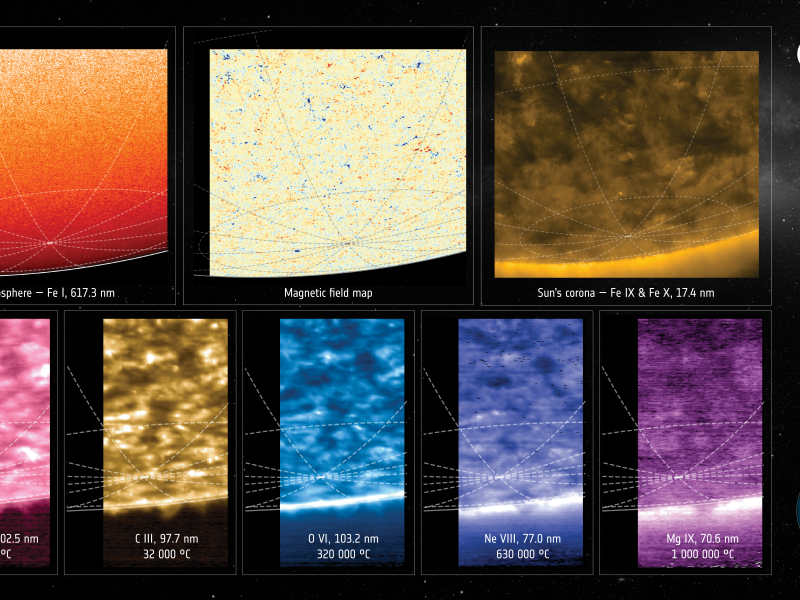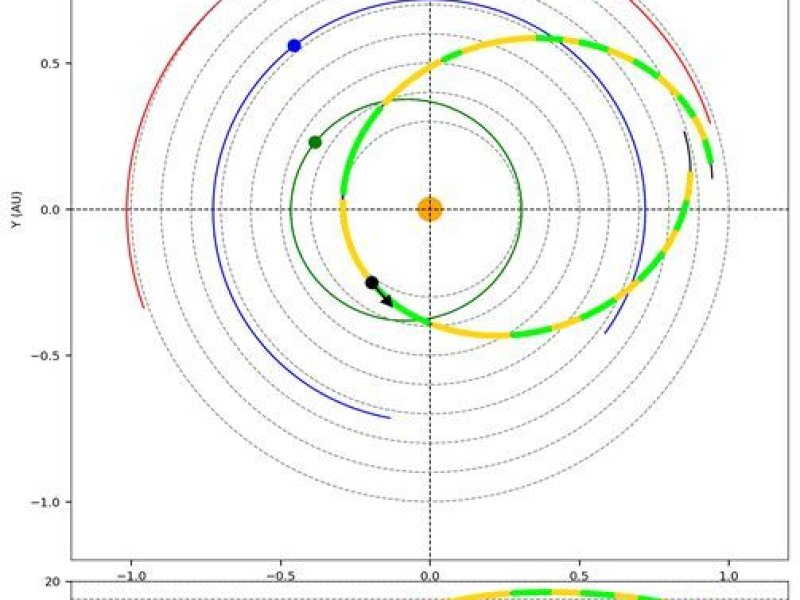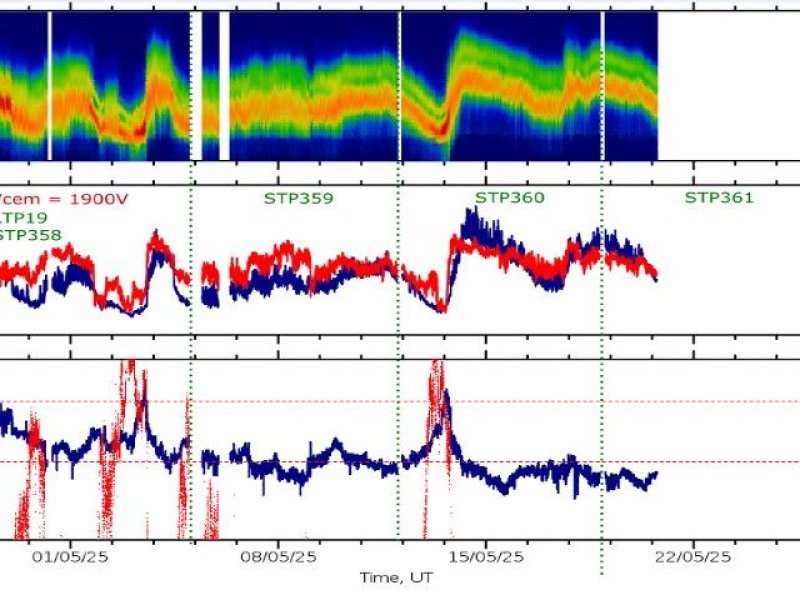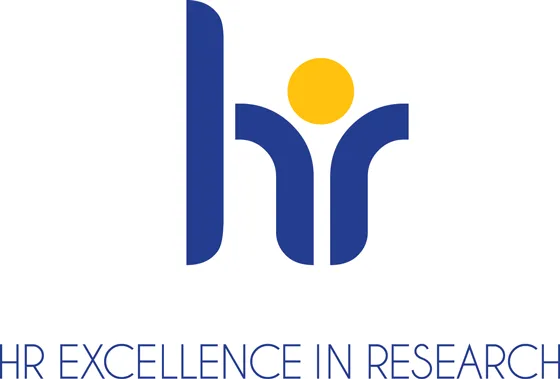Solar Orbiter Probe Captures Unique Images of the Sun’s Southern Pole

In the second half of March this year, the optical instruments aboard the interplanetary probe Solar Orbiter captured the very first and globally unique images of the solar disc in the region of the Sun’s southern pole. Electronic equipment developed at Matfyz is also operating successfully on board the probe.
The new images combine instrumental data obtained in the visible spectrum (PHI – Polarimetric and Helioseismic Imager) and the extreme ultraviolet spectrum (EUI – Extreme Ultraviolet Imager, 17.4 nm; SPICE – Spectral Imaging of the Coronal Environment, 70–103 nm), offering a comprehensive view of the solar photosphere, the magnetic field polarity at the Sun’s surface, and additional layers of the solar atmosphere – from the chromosphere to the corona.
Until now, comparable images of the Sun could only be captured from the plane of the ecliptic, in which Earth’s orbit around the Sun lies. However, observations from this plane yield only distorted views of the solar surface at high latitudes, and the solar poles themselves are entirely obscured. Thanks to the comparison and analysis of complementary observations carried out by the Solar Orbiter’s imaging instruments, scientists can now gain deeper insights into phenomena such as the movement of solar plasma in the Sun’s outer layers, and even uncover unexpected features such as polar vortices similar to those observed on Saturn and Venus.
Flybys Every Six Months
Repeated flybys of the planet Venus have enabled adjustments to the probe’s orbit. The most recent flyby, in February of this year, lifted the probe orbit to an inclination of 17° to the ecliptic plane, first passing a vantage point over the southern solar pole and later, during May and June, after a rapid passage through perihelion and the ecliptic, over the northern solar pole. Additional images were captured there; however, they will not reach Earth for at least a month due to the enormous volume of data and the limited transmission rate, as the probe is currently located behind the Sun. High-latitude flybys allowing polar observations will recur every six months, with the next opportunities coming up in September and October this year.
The nominal mission of Solar Orbiter is scheduled to continue until the end of next year. Scientists are already preparing for the next phase (high-latitude observations until 2030), during which the probe, after further three gravity-assist manoeuvres around Venus, could observe the solar poles from an angular elevation of over 33°. These long-term, repeated observations will allow researchers to study the evolution of the polar regions in relation to the solar activity cycle – from the current solar maximum through the expected decline and to minimum by the end of the next phase.
While Solar Orbiter’s remote-sensing instruments (telescopes, spectrometers, and coronagraphs) focus their operations on coordinated observation windows (e.g., in perihelion or when passing the pole vantage points), the in-situ instruments continue with ongoing measurements – monitoring the interplanetary magnetic field, waves, the solar wind, and energetic particle spectra. The scientific goal is to link these in-situ measurements to the particle sources – the roots of magnetic lines of force on the Sun’s surface – using computational models, thereby gaining deeper insight into the origin and dynamics of the solar wind and the propagation of eruptive events through the inner heliosphere.
A Czech Contribution to Solar Research
Since the beginning of the mission, researchers from the Department of Surface and Plasma Science at the Faculty of Mathematics and Physics, Charles University – specifically the space physics group – have had priority access to the data as they contributed to the development of the electronics for the proton and alpha particle spectrometer of the SWA-PAS instrument. Matfyz scientists have also been regularly involved in the weekly coordination and planning of measurements within the operational team for the Solar Wind Analyzer (SWA) instrument suite since the probe’s launch.
“Our staff and PhD students have the opportunity to analyse observed events and assist in the ongoing quality control of the data before it is released to the broader scientific community. We also offer bachelor’s, master’s, and doctoral theses focused on processing and interpreting data from this important international project,” explains Assoc. Prof. Lubomír Přech, the project leader for the Czech Republic.
In the near future, Solar Orbiter observations of the solar wind will be additionally complemented by data from a Czech-developed instrument. “This is the Faraday Cup Analyzer, which we are developing for the HENON deep-space demonstration mission (a 12U XL CubeSat). The planned launch of this mini probe is scheduled for December 2026, together with the ESA’s Plato mission,” adds Assoc. Prof. Přech, also outlining the future direction of the research.
Project Leader: Assoc. Prof. RNDr.
Lubomír Přech, Dr.
Address: Faculty of Mathematics and Physics,
Charles University, V Holešovičkách 2, 180 00 Prague 8, Czech
Republic
Email: lubomir.prech@mff.cuni.cz
Other Sources:
Solar
Orbiter gets world-first views of the Sun’s poles
Solar
Orbiter. The Sun up close
Heliospheric
Pioneer for Solar and Interplanetary Threats Defence (HENON)
KFPP







